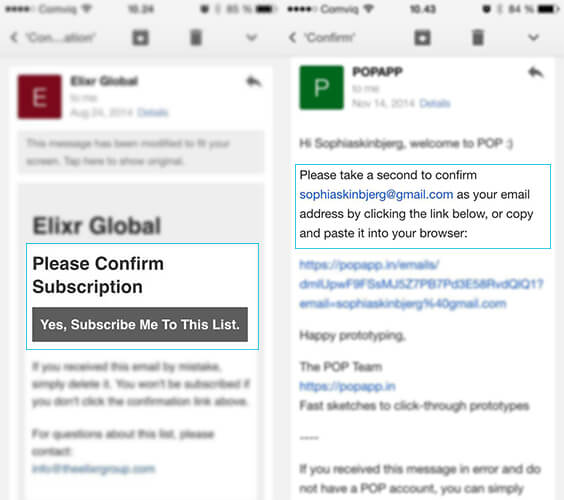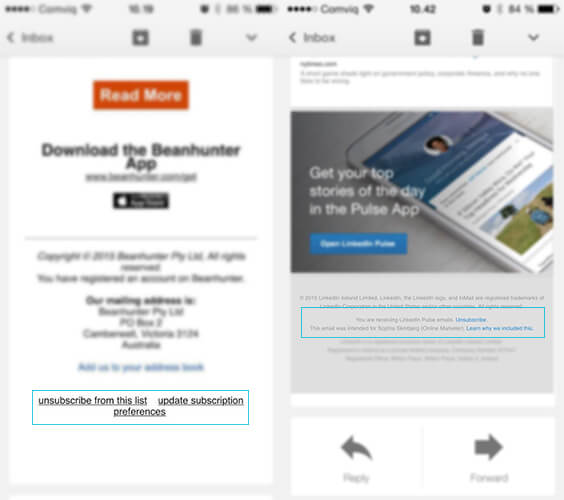
Email Strategy for Small Business: What You Need to Know
By Sophia Skinbjerg | sophia.skinbjerg@ungapped.com
Whether you have started a small business recently or have been running one (or more) for years, you’ll no doubt know that having an emailing strategy is a must-have. But before you dive in and start emailing contacts left right and center, take the time to prepare yourself on some basic “know hows”. To help, we’ve prepared this list of 11 basic pointers to use when devising or revisiting your email marketing strategy.
1. Get with the lingo
With everything in the digital and email marketing moving at the speed of light you can be forgiven for not knowing every piece of terminology used by modern marketers. Terms like hard-bounce, soft-bounce, conversions, CTR, call-to-action and honey pot just become words that go in one ear and out the other when you don’t understand their full meaning.
The best way to combat that is to simply get up to speed with the most commonly used email marketing lingo. Find yourself a recent glossary of terms like this one from Hubspot and bookmark it so you can easily navigate back when you’re in need. Or better still; start making your own glossary. It’s a handy reference tool for you and your team and it makes for a nice piece of ‘living’ blog content.
2. Know the law (or give yourself a refresher if this isn’t your first rodeo)
Email marketing rules, regulations and laws differ depending on where you intend to use your email marketing strategy.
In the U.S.A businesses must adhere to the CAN SPAM Act of 2003, a law that sets the rules for commercial email, establishes requirements for commercial messages, gives recipients the right to have you stop emailing them, and spells out tough penalties for violations.
In the European region, tough data protection laws are in place to ensure business and companies adhere to the same standard of behavior across the continent.
Now I know that it can be quite daunting as a marketer to read through all the legal documentation. So it’s a relief to know that associations and organizations exist to protect consumers and marketers through guidance, education and advocacy.
In the United States marketers can turn to the Direct Marketing Association with the European counterpart being the Federation of European Direct and Interactive Marketing. Individual countries belonging to the EU can also have their own organizations and associations, for example, SWEDMA in Sweden.
If you aren’t already a member of the DMA, FEDMA, SWEDMA or a similar organization, it might be worthy to consider.
3. Broaden your philosophy on the possibilities of email marketing
There is an abundance of information and education available online to teach us everything there is to know about creating the perfect email campaign. Unfortunately not everything out there is of high quality or standard. As a result, it’s pretty common to see statements like this:
“An email campaign can be an effective way to get a message to your target audience”.
What’s wrong with this statement? Well, there’s several things that are misleading but the most concerning is the use of the word ‘message’.
By using ‘message’ the sentiment of the whole sentence changes and implies that email campaigns are a one-way communication method where you as the marketer kind of just shout something at your subscriber in the hope that they will obey your command. That’s not what email marketing is about.
Your goal isn’t to send mass mailings with an identical message about your business to all contacts. Your goal is to create a relationship based on two-way communication with your subscribers whereby you as the marketer nurture them through the customer journey, which will vary for different types of customers. Your email marketing strategy should reflect this philosophy.
4. Set yourself some goals
When you’re jumping into creating an email strategy for small business, a lot of the content available encourages you to just get started with your first mailing campaign. This of course is great for motivation but it kind of brushes over the importance of goal setting. Without goal setting you run the risk of producing campaigns that have no real effect or value to your business.
Before you send your first mailing campaign take the time to explicitly state what you hope to achieve by using email marketing. It could be directly tied to sales, for example, increasing the contact database from 1000 to 1500 in 2015. Or it could be related to PR and brand awareness, for example, send 10 press releases to a, b, c news outlets / media agencies before the new launch.
Whatever your goals are be sure to write them down. It will help you to think about how each mailing campaign will be contributing to that overarching goal.
5. Make a schedule and stick to it (and then review it)
After setting your goals you will need to think about how your email strategy will bring you above and beyond those benchmarks. Think about how often you would like to send a mailing (and if that is realistic) and what the purpose of each mailing will be. It’s great to have a monthly newsletter but this shouldn’t be the only mailing you have.
To make a mailing schedule, write down a few different types of mailings you’d like to send and the days on which you should send them over a period of 4 weeks (or one calendar month). This could be anything from blog content, product upsells/sales or event invitations. Just make sure that whatever the content is that it is directly tied back to your email strategy goals.
Setting these expectations will help you stick to the plan for 4 weeks. At the end of the month, review how smoothly the schedule was rolled out and what affect it had on business. If you’re not satisfied, tweak the schedule where it needs tweaking and try again for the next 4 weeks.
Read why the summer is a great time to revisit your email strategy
6. Choose a platform that suits your needs
There are plenty of email service providers and platforms to choose from if you’re a small business so don’t be worried about a lack of choice. You just need to find the right one for you based on your needs.
Thinking back to your goals can help you identify what you’re looking for in a service provider or platform. If you’re new to developing an email strategy for small business or email marketing in general, choosing a provider or platform with great support is a no brainer.
Looking for great support? Our marketing-educated support team is there every step of the way. Create a free account.
Or if you’re looking to have control of your mailing content but want someone else to send it out for you, that’s an option too.
Check out our services and see how we can free up your time.
7. Segment your contacts
If you’re new to email marketing, you might not have too big of a contact database to segment and that’s ok. But you should start to think about how you will segment all your future subscribers. As I mentioned a bit earlier in the post, sending the identical mailing to all your contacts isn’t really going to return much value either to the reader or your business. In fact, you’re likely to lose subscribers.
Instead, try grouping your contact list based on what their relationship is to your business and where they are in the buyer’s journey. Some basic cohorts include customers, previous customers and blog subscribers. Then, group these contacts into lists so that you can quickly access them when you composing a mailing.
8. Make subscribers say yes twice
To ensure that you’re getting subscribers that really want to receive mailings from you, it’s smart to implement a double opt-in process.
All this means is that when a subscriber signs up to your newsletter or subscribes to your blog, they will receive a confirmation email which they need to click through in order to confirm their email to your contact database. The benefit for you as a small is business is that your subscribers and signups are verified and legitimate.
9. Don’t ask for too much personal information too soon
You should endeavor to make the signup process as easy as possible. This means asking for as little information as possible, namely, their email. I’ve seen businesses, big and small, make this mistake many times. When I land on a subscription page I’m required to fill out ten or more fields giving my personal information including at least my name, email, address, country, zip code, job title, company etc. etc. If I have to do this just for blog a subscription I’m simply going to leave the page and go somewhere else.
Try to keep the amount of required personal information balanced between what the reader is receiving in return. For example, if the reader is subscribing to the blog the only required information should be their email. However, if you’re giving the user a free download then you can push for a little more personal information such as first and last name as well as email.
10. Include unsubscribe option in all mailings
Regardless of who you’re sending to or the amount of mailings you’re sending, it is mandatory as a business that you provide an unsubscribe option in every mailing.
It’s up to you where in the mailing it is placed but it is best practice to place it in an area that can be easily found by the user. The unsubscribe process should be easy and straight forward also – attempting to make it more difficult for readers to unsubscribe is only going to frustrate them and decrease satisfaction with your business.
11. Make testing a habit
Although this is the final pointer it is in no way the least important – testing your mailings is vital to the success of your email strategy. Doing so will help you to pick up on simple spelling or grammatical errors as well as the more technical issues such as responsiveness across devices, appearance in different email readers, working links and errors in custom fields.
Before each mailing, send a test to yourself and open the mailing on your desktop, your phone and tablet device if you have one. Has the mailing adjusted to fit the correct screen size or is it warped and out of proportion? Click your links and check whether they take you to the correct landing page.
Using a simple quality control process might just save you from a slightly embarrassing mistake.
Start putting your email strategy for small business to use
Sign up for a free account with Ungapped and start kicking some of those email goals!

